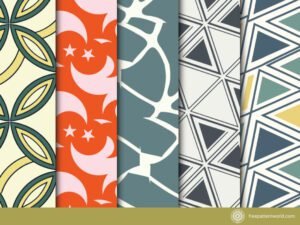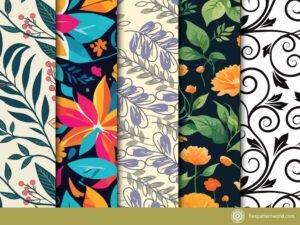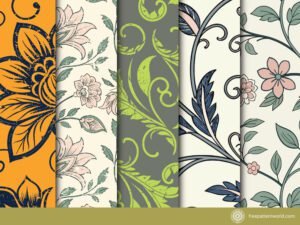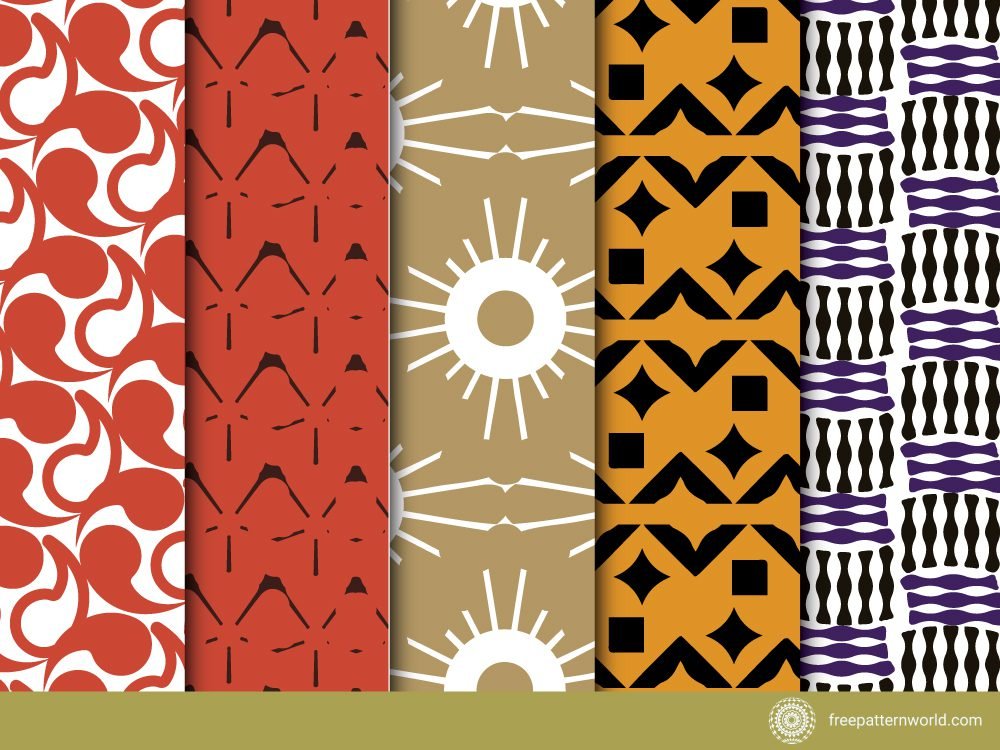
Japanese patterns are celebrated for their elegance, intricacy, and cultural significance. These designs have been used for centuries in various forms of art, from traditional textiles and ceramics to modern graphic design. Here, we explore the top 5 Japanese pattern designs that have stood the test of time and continue to inspire creativity worldwide.
Seigaiha (青海波) – Blue Ocean Waves
Seigaiha, meaning “blue ocean waves,” is a classic Japanese pattern featuring layered concentric circles that create a wave-like appearance. This design symbolizes good luck, strength, and resilience, akin to the ocean’s enduring and powerful waves.
Uses:
- Traditional kimono fabrics
- Wallpapers
- Ceramic dishes
- Modern graphic design
Appeal:
The rhythmic and flowing nature of Seigaiha provides a calming visual effect, evoking the tranquility and power of the ocean.

Shippō (七宝) – Seven Treasures
Shippō, which translates to “seven treasures,” features a circular pattern of overlapping circles that create a flower-like or starburst effect. This design symbolizes the seven treasures mentioned in Buddhist texts: gold, silver, lapis lazuli, crystal, agate, red pearl, and carnelian.
Uses:
- Ceramics and pottery
- Jewelry
- Traditional textiles
- Contemporary art
Appeal:
Shippō’s elegant interlacing circles create a sense of interconnectedness and abundance, making it a beloved pattern in both traditional and modern contexts.
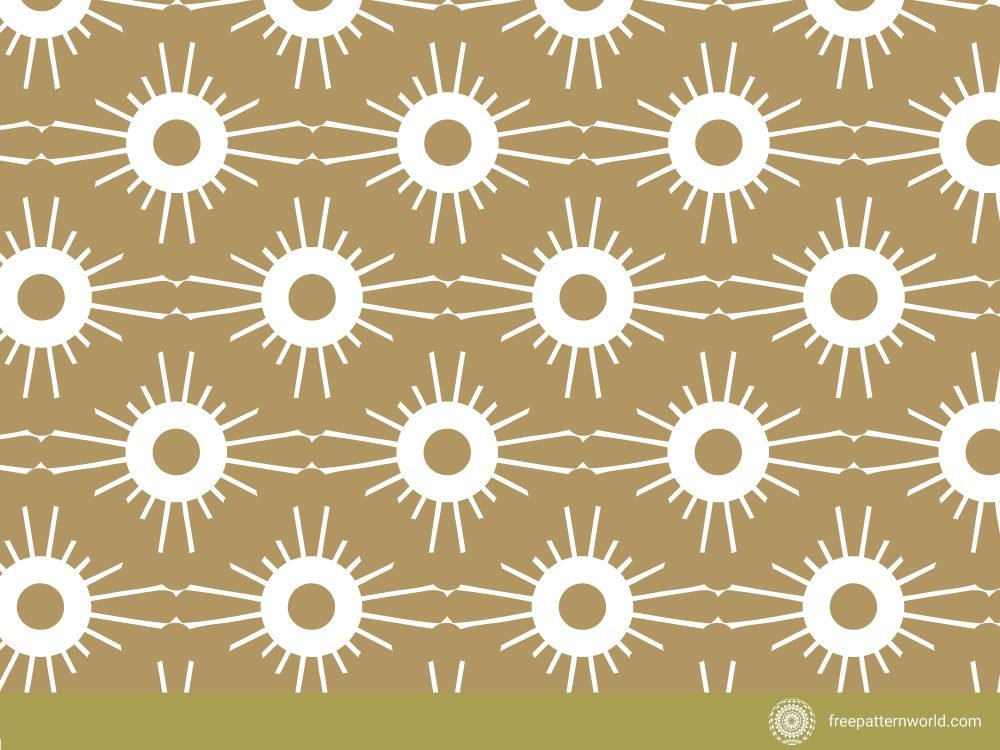
Uroko (鱗) – Fish Scales
Uroko, meaning “fish scales,” is a triangular pattern that resembles the scales of a fish. This pattern is often used in designs meant to ward off evil spirits and symbolize protection.
Uses:
- Samurai armor and helmets
- Kimono and yukata fabrics
- Home decor
- Modern graphic design
Appeal:
The interlocking triangles of Uroko create a dynamic and protective design, embodying themes of security and vigilance.

Fan Pattern (扇)
The Japanese fan pattern, known as 扇 (Ogi), is a significant and traditional motif in Japanese art and design. This pattern, often seen in textiles, ceramics, and other decorative arts, symbolizes elegance, sophistication, and cultural heritage. Fans have been used in Japan for centuries, not only for practical purposes but also as a symbol of status and aesthetic beauty.

Kiku (菊) Pattern
Kiku (菊), meaning chrysanthemum in Japanese, is a highly revered and significant motif in Japanese art and design. The chrysanthemum has deep cultural, historical, and symbolic meanings in Japan, making it a popular pattern in various artistic expressions.
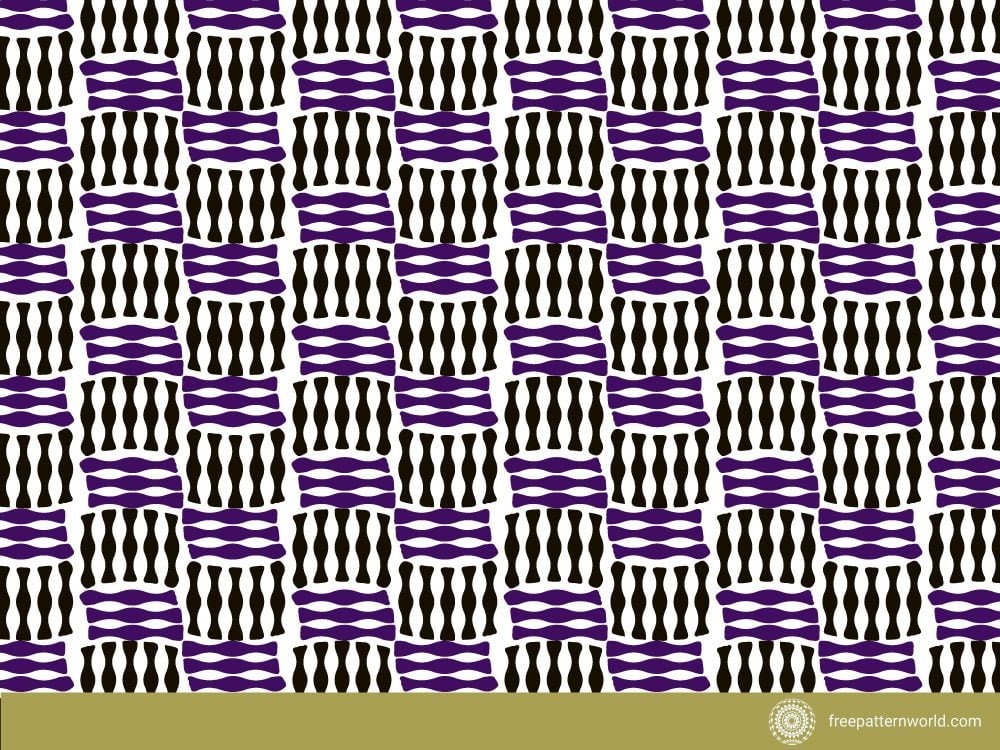
Japanese patterns like Seigaiha, Asanoha, Kikkō, Uroko, and Shippō each offer a unique blend of beauty, cultural significance, and artistic expression. Whether used in traditional or contemporary designs, these patterns add depth and elegance to any project. Embracing these timeless designs can bring a touch of Japanese heritage and aesthetic to modern creativity.
To download more Click here.
Download more free designs from freepatternword and freepik.
Top Graphic design service provider – Click here.
Support Us with Crypto!
If you enjoy our content and want to help keep this site running, you can support us with crypto. Your support is appreciated!
USDT(TRC20): TSW1iyNhUHiGvc2VdQvZqkqgCTGvdrnsY7
Bitcoin: 38ZHQNkrbZKYJhbLeFZiCrQdR3C2ddtAzV
ERC-20: 0xe1BD9D788256905c6efFd38333A3fF1b6DE3ce67
What are Japanese pattern designs?
Japanese pattern designs are traditional motifs and patterns that have been used in Japanese art, textiles, and ceramics for centuries. They often carry deep cultural and symbolic meanings.
What is the significance of the Seigaiha pattern?
The Seigaiha (青海波) pattern represents “blue ocean waves” and symbolizes good luck, strength, and resilience, reflecting the powerful and enduring nature of the ocean.
How do these patterns contribute to modern design?
These traditional Japanese patterns add cultural depth, elegance, and symbolic meaning to modern design projects, making them timeless elements in both traditional and contemporary contexts.
Can these patterns be used in digital design?
Yes, these patterns can be adapted for use in digital design, including website backgrounds, graphic elements, and digital textiles, providing a blend of tradition and modernity.
Are there specific colors associated with these patterns?
While traditional colors were often used, modern interpretations can incorporate a wide range of colors, allowing for creative freedom while maintaining the patterns’ traditional essence.

